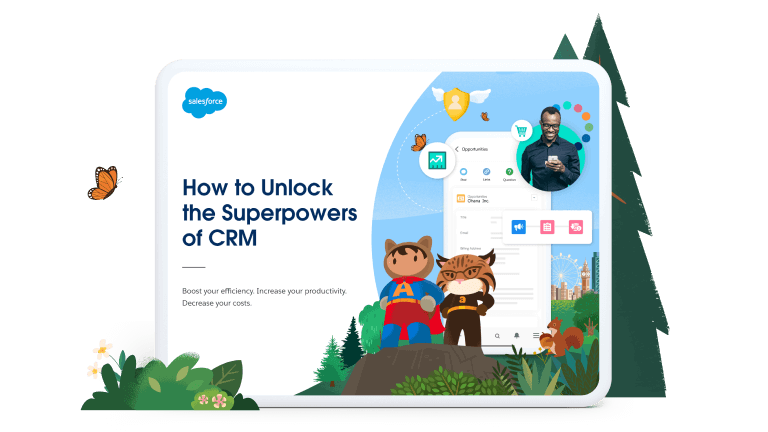Business process automation is a way for organisations to increase productivity, efficiency and profits by using technology to complete tasks that have traditionally been done manually.
Many of today’s businesses are automating tasks ranging from data entry and book-keeping to employee onboarding, customer service and marketing activities. Bigger companies such as Amazon rely on automation to handle everything from inventory optimisation and order fulfilment to standardisation across devices, but business process automation isn’t just a tool for global corporations – it’s turbocharging smaller businesses as well.
In fact, automation is especially important for SMEs, as it can help them maximise their most important resource: their people. It’s no wonder that the use of business process automation is increasing across functions. Research shows that:
91% of organisations say that the demand for automation from business teams has increased over the past two years. (Automation Trends)
58% of service organisations use process or workflow automation. (State of Service)
35% of marketers invested in process/workflow automation strategies during the pandemic. (State of Marketing 2022)
67% of marketers say that measurement/attribution is an automated process. (State of Marketing 2022)
80% of IT organisations have hyper-automation on their technology roadmap within the next two years. (Automation Trends)
The benefits of business process automation
Business process automation has a number of benefits for SMEs, including:
Increased productivity. Automation tools can handle multiple tasks simultaneously. This boost in productivity is just one reason why 85% of organisations said they’re moving from task-based automation to end-to-end automation in a 2021 Deloitte survey.
An exceptional CX (customer experience). Customers can benefit from automation with chat bots, self-service options, AI-guided customer journeys and more consistency across channels. The State of Service reveals that high-performing organisations are especially likely to use automation to improve their CX, with 65% of high performers automating service processes, versus only 41% of underperformers.
A better EX (employee experience). Automating repetitive, low-value tasks can free the workforce to focus on more business-critical work.
An improved ROI on marketing activities. Ads and communications can be tailored to customer behaviour and search queries increasing the return on investment.
Increased profits. Businesses can streamline capital expenditures and better leverage the skills of their workforce across functions and departments. They can even train the workforce to take on exciting new roles and more creative responsibilities.
These company-wide benefits reveal that automation can help organisations that are:
Struggling with business process management.
Looking for productivity hacks.
Searching for ways to maximise the impact of their investments.
Trying to improve employee satisfaction.
The three types of business process automation
There are three types of automation to consider:
Rules-based automation (RBA). Rules-based automation is the simplest form of automation. It applies pre-set, man-made rules to data storage and manipulation. It’s often used to carry out high-volume tasks that are simple and repeatable, such as cutting and pasting information or transferring data from invoices.
Robotic-process automation. Robotic-process automation is a more advanced form of automation. It can ultimately perform many of the same functions as RBA, but it does so by learning from and mimicking human behaviour. In other words, it doesn’t need to be pre-programmed, thus lowering the barrier to use. Some examples of RPA include chatbots or emails automatically triggered by customer queries.
Cognitive automation. Cognitive automation relies on a more advanced form of AI. This AI operates in a way that’s closer to how humans operate, enabling it to understand context, learn continuously and support more informed decision making. It can analyse complex, free-floating data to improve the analytical capabilities of humans. Cognitive AI can be used for everything from handling logistics operations and end-to-end customer service to onboarding new employees.
The challenges of automating business processes
When evaluating whether automation is right for your business, there are a few things you’ll want to think about
The first is the cost of set up and implementation. While you can expect to see productivity and efficiency increases fairly quickly, it may take slightly longer to recoup your upfront costs. For example, 89% of customers using Salesforce’s Customer 360 achieve positive ROI in nine months*.
You may also need to overcome some resistance in the workplace. Some employees may be slow to embrace change, especially if they feel like it might present a danger to their job. The key here is to make sure that workers realise the technology is being used to empower them, not replace them.
Business process automation in six steps
Identify which business process you want to automate. The first thing you’ll want to do is determine which processes will benefit the most from automation. Gather feedback from the workforce about what tasks are most time-consuming and the least valuable.
Determine how those processes can be improved. Once you’ve identified the processes you’d like to automate, decide how they can be improved. Would end-to-end automation work best? Or are there simple, individual tasks that can be automated?
Research tools and technologies to find the right solutions for your needs. Now that you’ve identified what you’d like to improve – and how – it’s time to find the right tools. Look for a company that’s not just a technology provider, but can act as a strategic partner. The better they understand your pain points, the more they’ll be able to help.
Design and test the automated processes. Once your technologies are in place and you’ve reimagined your workflows, test out your new processes. Remember that innovation is a key driver for improving productivity, but it may take some tweaking to get everything operating at its peak potential.
Skill the workforce to handle the new, streamlined workflows. While you can adjust your tools to align with your people, you can also skill up your people to take on your new tools. On-demand training platforms have made it easier and more affordable than ever to turn any worker into a digital disrupter. You can also introduce some apps to help them on their learning journey.
Implement the automated processes. Once your processes have been re-designed for maximum efficiency and productivity, it’s time to put them into action. After implementing your new tools and processes, make sure that you track their effectiveness. You can even set KPIs (key performance indicators) to measure how well you’re meeting your automation goals.
Are you ready to empower your workforce?
As you can see, the true nature of machines in the workplace is quite a bit different than in Hollywood films. And while there’s been much concern and many predictions about machine-learning tools replacing humans, the truth is that they’re more powerful when they’re working with us.
Automation can help unlock the potential of the workforce. Just as importantly, it can free them to learn new skills and take on new rolls, thus helping SMEs to fill any skills gaps. And in an age of tightening budgets, being able to address these skills gaps without having to recruit and hire can be a huge benefit.
To see more about how your business can use technology to reach its peak potential, check out our guide, Unlock the Superpowers of CRM.
*Source: 2022 Salesforce Success Metrics Global Highlights study. Data is from a survey of 3,706 Salesforce customers across Singapore, the US, Canada, the UK, Germany, France, Australia, India, Japan and Brazil conducted between June 8 and June 21, 2022.








